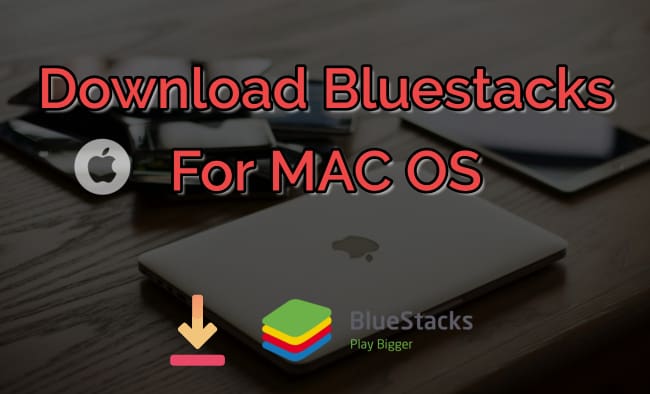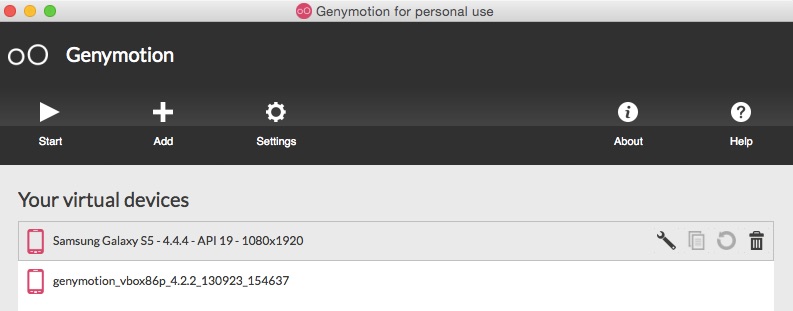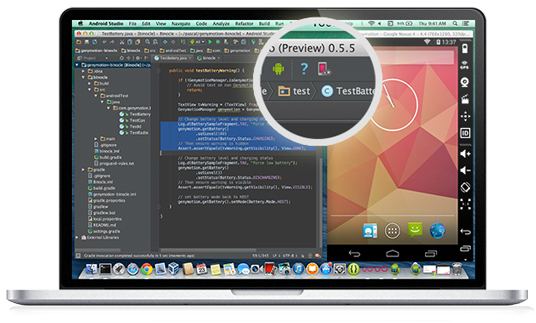

By default Android emulator is extremely slow. It takes 5 minutes to start the emulator!
To make it faster there are two approaches:
- If your machine supports Intel VT-x technology, you can install special HAXM extension, so that the emulator will make use of all the power your computer has.
- If your computer doesn’t support virtualisation, you can still significantly improve the boot time of the emulator by configuring it to save its state. This will make the emulator start faster, but the UI will still be slow, and it will take a bit longer for the emulator to close.
Emulators are applications which allow you to enjoy Android apps and games on your Windows or Mac device. With the help of Android emulators, you can access all Android applications including high-end games on your PC. Emulator users are able to use mouse and keyboard which gives you better control in comparison to mobiles. Bluestacks Emulator is an Alternative Way to use Android APK Packages on your Windows 10 Laptops and Desktops. Bluestacks is an Android Emulator Software, which is used to run Android Apps on Windows 10 PC and Mac Yosemite. It is a unique virtualized platform that allows users to play mobile games on their PCs and. To get the Android emulator for your Mac, download and install the Setup Package. Click the blue link below to begin the download. Download the installer. Version 3.0: For macOS 10.10 (Yosemite) and up. If you previously had the emulator installed, you may need to perform a hard reset. Version 2.3; Double-click the downloaded file to start the.
There is a pretty detailed Stackoverflow answer regarding HAXM and Android emulator performance.
Unfortunately, my old laptop didn’t support Intel virtualisation technology, so I didn’t even consider working with emulator. Instead, I always used a physical android device to test my apps.
When I started the emulator on Mac, I hoped it would run much faster (with SSD and Intel Core i7 on board). But no – the emulator was still very slow. This brought me to Stackoverflow, where they discussed how to enhance the speed of Android emulator by installing HAXM.
So, I tried to make the emulator on freshly installed Mac OS X 10.0 Yosemite run faster. I followed the instructions provided in the article, but at the end of installation, I got error message, saying that my laptop supports virtualisation, but VT-x is disabled.
According to Apple official specs, all latest macs that are running on Intel CPUs, have VT-x feature enabled by default. It might seen as disabled by the HAXM Installation Manager for two reasons:
- VT-x future is currently in use by another application (such as Parallels Desktop or other virtual machine).
- Something is wrong with the left falange (http://www.youtube.com/watch?v=DrwVB4vMx-Q).
As I didn’t have any other emulators or virtual machines running, I decided to find a way to make it work. And after some googling, I finally found a solution. According to the blog post I found, there was an issue with an incorrectly signed kernel extension on Intel’s part. I believe Intel will fix it soon, but for now as a workaround, we can use the following command:
Android Emulator Yosemite Free
This makes kexts to run in dev mode and disables all signing checks. Changes will take affect after system restart.
By default Android emulator is extremely slow. It takes 5 minutes to start the emulator!
To make it faster there are two approaches:

- If your machine supports Intel VT-x technology, you can install special HAXM extension, so that the emulator will make use of all the power your computer has.
- If your computer doesn’t support virtualisation, you can still significantly improve the boot time of the emulator by configuring it to save its state. This will make the emulator start faster, but the UI will still be slow, and it will take a bit longer for the emulator to close.
There is a pretty detailed Stackoverflow answer regarding HAXM and Android emulator performance.
Unfortunately, my old laptop didn’t support Intel virtualisation technology, so I didn’t even consider working with emulator. Instead, I always used a physical android device to test my apps.
When I started the emulator on Mac, I hoped it would run much faster (with SSD and Intel Core i7 on board). But no – the emulator was still very slow. This brought me to Stackoverflow, where they discussed how to enhance the speed of Android emulator by installing HAXM.
So, I tried to make the emulator on freshly installed Mac OS X 10.0 Yosemite run faster. I followed the instructions provided in the article, but at the end of installation, I got error message, saying that my laptop supports virtualisation, but VT-x is disabled.

According to Apple official specs, all latest macs that are running on Intel CPUs, have VT-x feature enabled by default. It might seen as disabled by the HAXM Installation Manager for two reasons:
- VT-x future is currently in use by another application (such as Parallels Desktop or other virtual machine).
- Something is wrong with the left falange (http://www.youtube.com/watch?v=DrwVB4vMx-Q).
As I didn’t have any other emulators or virtual machines running, I decided to find a way to make it work. And after some googling, I finally found a solution. According to the blog post I found, there was an issue with an incorrectly signed kernel extension on Intel’s part. I believe Intel will fix it soon, but for now as a workaround, we can use the following command:
Android Emulator Yosemite Download
This makes kexts to run in dev mode and disables all signing checks. Changes will take affect after system restart.